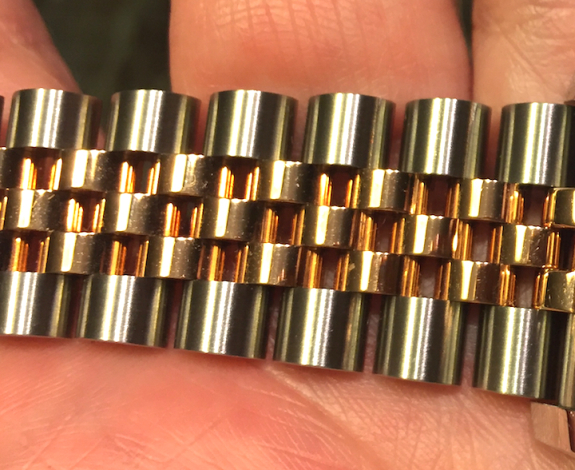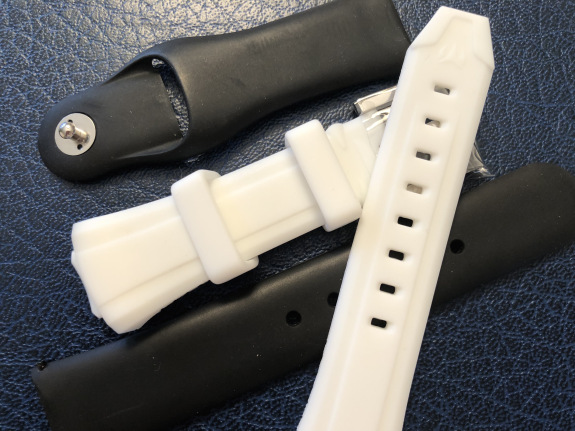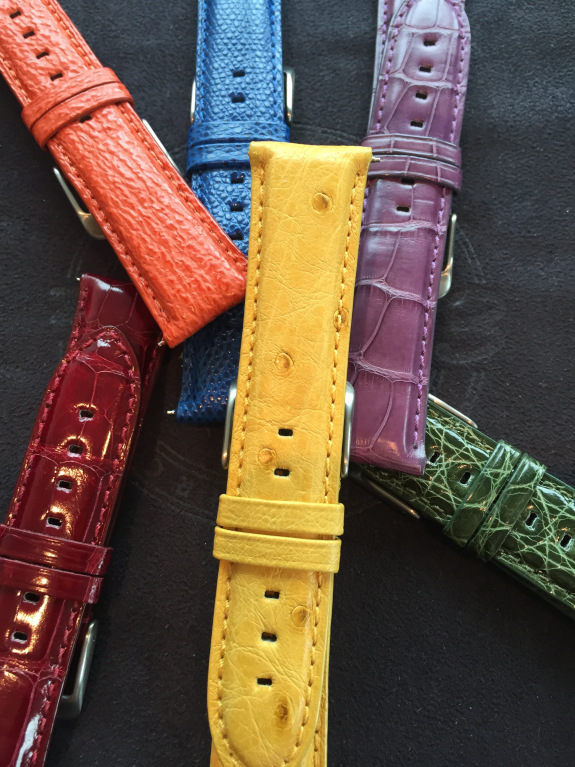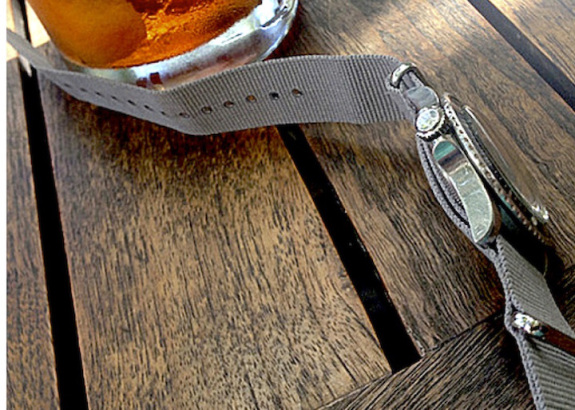We get a lot of questions about whether it is better to have a leather strap, a rubber strap or a metal bracelet on a watch. The answer really depends on your use of the watch and where/how you wear it. Things such as cold, heat, moisture, humidity, water and excessive wear and tear play a role in the lifespan of a watchstrap. While personal taste also comes into play, it is best to consider your activities before selecting rubber, fabric, leather or metal. Here we present the different types of watch strap materials and the pros/cons of each to help you choose the watch strap or bracelet that is right for you.
Rubber
If you are a water person who indulges frequently in swimming, be it pools or oceans, a rubber strap may be the best choice. Rubber weathers the elements beautifully. It dries quickly after getting out of the water, does not stick to the wrist. Additionally, rubber does not fade and lose its luster or hue. Many of today’s vulcanized rubber straps are blends of polycarbonate and other materials to keep them at top performance levels without getting dry or brittle.
Leather
If you are thinking about a watch in the office, where the air is conditioned, a leather strap is a good choice. Leather straps are comfortable to wear and give a great choice in hides, textures and color. Leather ranges from calfskin to ostrich, stingray, crocodile, alligator, snake and more. Leather is relatively easy to take care of in the right temperatures, but – in heat and humidity – these straps tend to get a bit sticky on the wrist.
Fabric/NATO
Fabric straps come in all types and fabrics. For women, a fabric strap is typically reserved for dress watches and is made of shimmering materials such as silk, satin, even lace. These materials can stain, although most brands protect their fabric with a special treatment. For men, the fabric watchstrap predominantly comes in the form of a NATO strap. Easily one of the hottest trends on the market today, NATO straps convert any watch from serious to sporty with ease. Sometimes referred to as military straps, NATO straps have roots dating back to the early 1970’s when British soldiers used nylon straps that were highly durable, could be easily cleaned and were not expensive to buy. NATO straps are typically made of nylon or other strongly woven fabric (though they are also offered in leather). They are easy to change and usually slip through the top lugs, pass over the case back and though the bottom lugs. The system acts as double security, too, because one need not worry about spring bars breaking or popping as with typical straps. They are very durable and highly functional, as they dry quickly, don’t stick to the wrist and are designed for extreme wear.
Metal:
 Another material good for water sports and sticky temperatures, metal bracelets are typically extremely sturdy. Of course, we are not talking about gold bracelets – those can scratch easily and are designed mostly for office and dress wear. Bracelets made of stainless steel, titanium and other alloys are strong and hold up well in outdoor terrains and activities. Titanium is very light weight, and many people in warm climates prefer this feel on the wrist. With today’s technology, steel and titanium can also be found in a host of colors thanks to PVD and other coating treatments. One of the nice things about bracelet watches is that they are easy to care for—they can be rinsed and cleaned with a soft cloth. The downside: depending on the material they can scratch.
Another material good for water sports and sticky temperatures, metal bracelets are typically extremely sturdy. Of course, we are not talking about gold bracelets – those can scratch easily and are designed mostly for office and dress wear. Bracelets made of stainless steel, titanium and other alloys are strong and hold up well in outdoor terrains and activities. Titanium is very light weight, and many people in warm climates prefer this feel on the wrist. With today’s technology, steel and titanium can also be found in a host of colors thanks to PVD and other coating treatments. One of the nice things about bracelet watches is that they are easy to care for—they can be rinsed and cleaned with a soft cloth. The downside: depending on the material they can scratch.
In the end, the choice of material for your watchstrap comes down to your lifestyle and your own personal taste.
(Note: This article written by Roberta Naas first appeared as a syndicated watch article for retailers)








